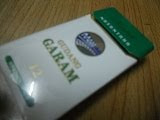Definition Of Reactivity Coefficient
The temperature coefficient of reactivity is the change in reactivity per degree change in temperature.
Important Coefficients of Reactivity
1. Moderator Temperature Coefficient.
The change in reactivity per degree change in moderator temperature. As the moderator (water) increases in temperature, it becomes less dense and slows down fewer neutrons, which results in a negative change of reactivity. This negative temperature coefficient acts to stabilize an atomic power reactor operation.
A reactor is under moderated when a decrease in the moderator-to-fuel ratio decreases keff due to the increased resonance absorption. A reactor is over moderated when an increase in the moderator-to-fuel ratio decreases keff due to the decrease in the thermal utilization factor. Reactors are usually designed to operate in an under moderated condition so that the moderator temperature coefficient of reactivity is negative.
2. Fuel Temperature Coefficient
Fuel temperature coefficient of reactivity is the change in reactivity of the nuclear fuel per degree change in the fuel temperature.
The coefficient quantifies the amount of neutrons that the nuclear fuel (uranium-238) absorbs from the fission process as the fuel temperature increases. It is a measure of the stability of the reactor operations. This coefficient is also known as the Doppler coefficient.
A negative temperature coefficient of reactivity is desirable because it makes the reactor more self-regulating. An increase in power, resulting in an increase in temperature, results in negative reactivity addition due to the temperature coefficient. The negative reactivity addition due to the temperature increase will slow or stop the power increase.
The fuel temperature coefficient is more effective than the moderator temperature coefficient in terminating a rapid power rise because the fuel temperature immediately increases following a power increase, while the moderator temperature does not increase for several seconds.
The Doppler broadening of resonance peaks occurs because the nuclei may be moving either toward or away from the neutron at the time of interaction. Therefore, the neutron may actually have either slightly more or slightly less than the resonant energy, but still appear to be at resonant energy relative to the nucleus.
3. Pressure Coefficient
The reactivity in a reactor core can be affected by the system pressure. The pressure coefficient of reactivity is defined as the change in reactivity per unit change in pressure.
The pressure coefficient of reactivity for the reactor is the result of the effect of pressure on the density of the moderator. For this reason, it is sometimes referred to as the moderator density reactivity coefficient. As pressure increases, density correspondingly increases, which increases the moderator-to-fuel ratio in the core. In the typical under moderated core the increase in the moderator-to-fuel ratio will result in a positive reactivity addition. In reactors that use water as a moderator, the absolute value of the pressure reactivity coefficient is seldom a major factor because it is very small compared to the moderator temperature coefficient of reactivity.
4. Void Coefficient
The void coefficient of reactivity is defined as the change in reactivity per percent change in void volume.
As the reactor power is raised to the point where the steam voids start to form, voids displace moderator from the coolant channels within the core. This displacement reduces the moderator-to-fuel ration, and in an under moderator core, results in negative reactivity addition, thereby limiting reactor power rise. The void coefficient is significant in water-moderated reactors that operate at or near saturated conditions.










0 comments:
Post a Comment